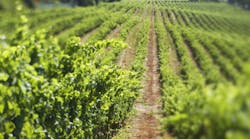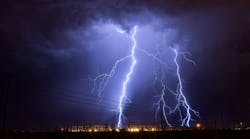The winner of last month's puzzle, Grape Scott! is StraightSh00ter57 who was first with most (not all) of the solution. Tom Rowell was the only participant who had the complete solution, but, alas, Tom didn't verify his email address. Without verification we have no way of sending the gift card.
So, here's the complete solution:
- The ice formation does indeed add heat to the grapes- keeping them at 32 degrees.
- The sugar and other constituents of the grape lower it's freezing point a bit so the 32 degrees is ok.
- The ice formation also provides insulation
- The continued spraying continues the freezing/insulation process
- (This is the one that most respondents missed) - the continued spraying also keeps the ice surface from drying out. The drying would chill the ice (and eventually the grape) below 32 degrees because of absorption of the heat of evaporation and also possible sublimation of the ice.
Incidentally, this puzzle derived from an experience that Paul Mauldin had when he worked for PG&E. He remembers, with fondness, meeting with the consultant and the vinyard manager in a grape orchard in Napa Valley, California.
Full puzzle:
Frank, an electrical distribution engineer, recently retired from a large utility in Florida and, with his wife Susie, moved to the San Francisco Bay Area. The Napa and Sonoma valleys are nearby and Frank and Susie enjoyed touring the wineries.
One fall day, as they sipped some nouveau Beaujolais (or at least the Napa facsimile of the French wine), Frank thought he had a great idea for protecting the grapes against early frost:
"Why not electrify and thus heat the vine supporting wires?" he asked Susie (who was busy trying some excellent dark chocolate with her wine). He mentioned the idea to the winery manager who was polite but told Frank that they already had a method that usually worked quite well. They used large water sprinklers when there was a frost danger. A layer of ice would form on the grapes and protect them somehow.
The manager (who had been business major), didn't know why putting a layer of ice on the grapes protected them (seemed counter-intuitive) nor why, for some reason, the sprayers were left on to keep the ice wet (seemed like a waste of water).
"Aha", said Frank, "I see!" and he actually did see, having been an ardent student of thermodynamics in his college days. He explained everything to Susie on the drive home. Susie listened respectfully but really couldn't have cared less.
Your turn:
Why did the spray protect the grapes and why was the ice that formed kept wet?


